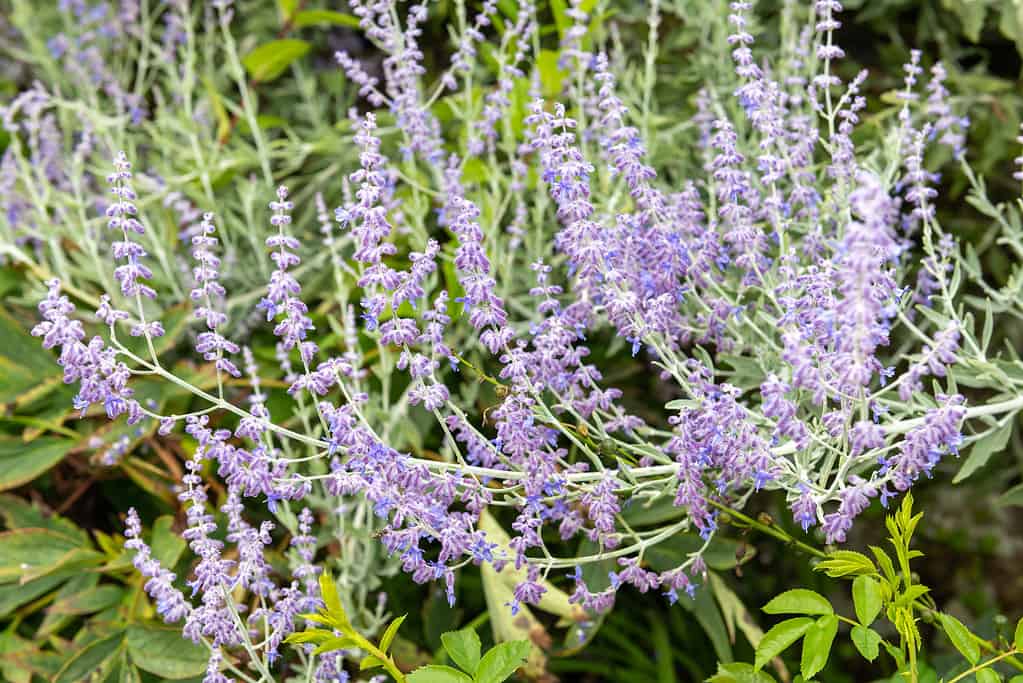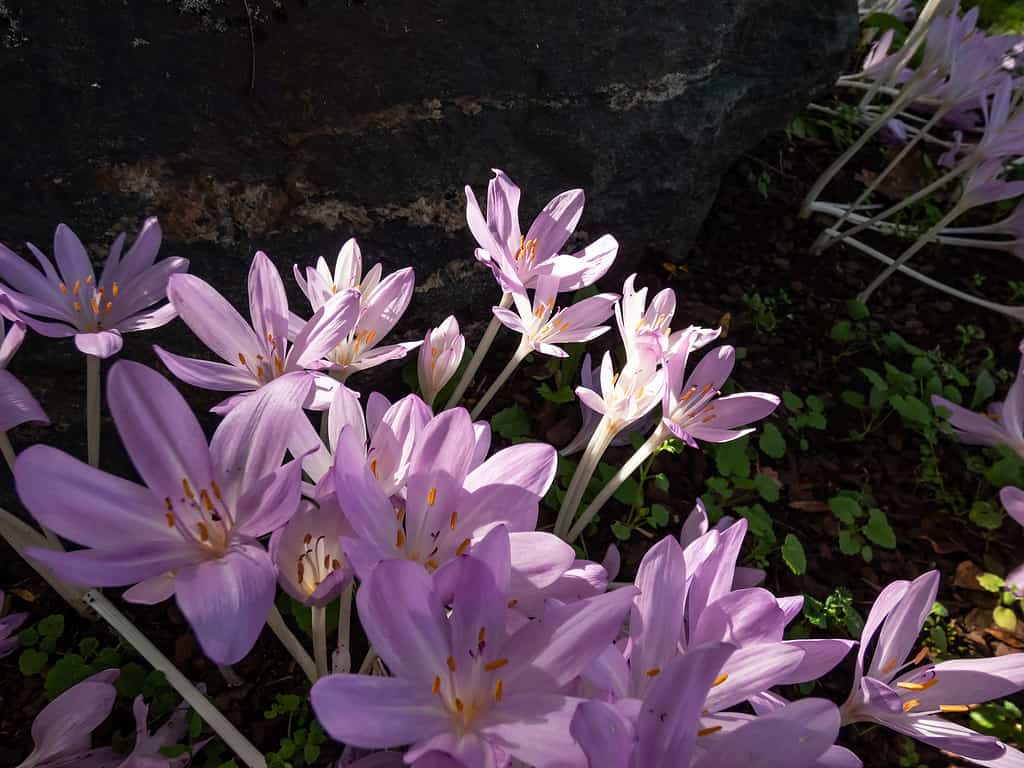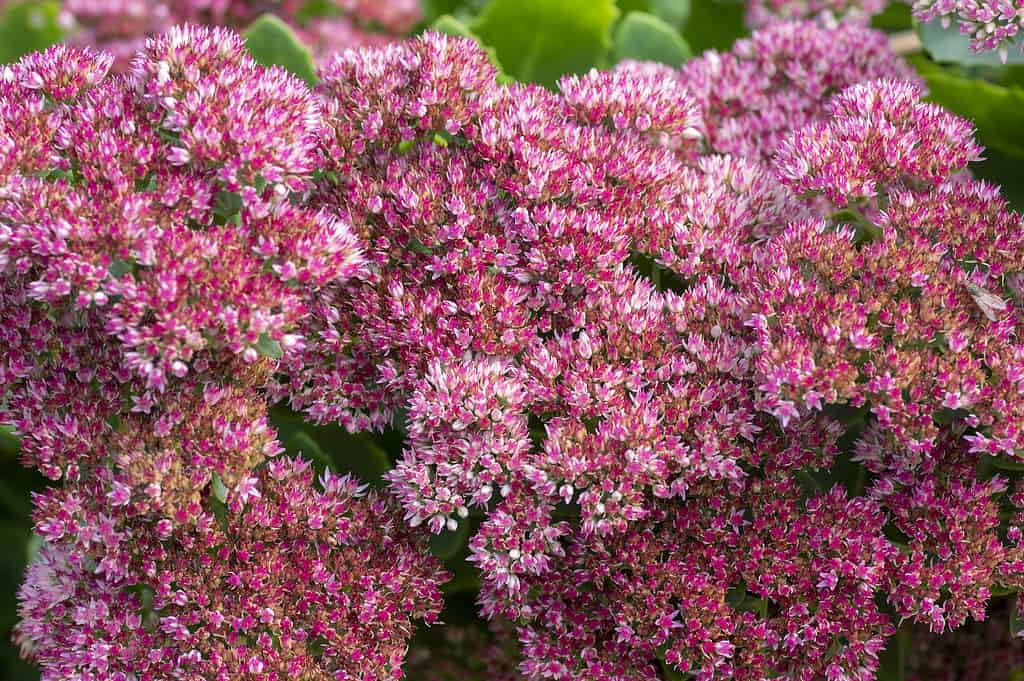Connecticut is well known as the state home to some of the most beautiful scenery in the country, especially during fall. While autumn leaves come to mind, the state is also populated with stunning fall-blooming flowers. Here are the top 10 best fall flowers in Connecticut. These vibrant blooms are sure to brighten up any landscape during the autumn months in Connecticut!
1: Golden Glow (Rudbeckia hortensis)

The golden glow is a yellow flower that likes partial shade to full sun.
©anmbph/ via Getty Images
Aptly nicknamed the ‘golden glow’, these bright vibrant yellow blooms are sure to spice up any garden in the late summer to fall months. An extremely hardy plant, the golden glow spreads rapidly to cover a large area, growing up to 6ft tall. This plant likes partial shade to full sun and normal watering. It is salt and cold-resistant but is commonly targeted by slugs, snails, and aphids. To combat this, remove hiding places such as overturned pots, and tarps and remove weeds surrounding the plant. They are deer-resistant and attract butterflies.
2: Russian Sage (Salvia yangii)

Russian sage is a hardy plant that flourishes without much maintenance.
©Tom Meaker/ via Getty Images
One of the lowest-maintenance flowers on this list, the Russian sage is a hardy perennial in the mint family. With long-lasting blooms, this is sure to be a great addition to the garden from midsummer to fall. When winter comes, it generally should not require much care, unlike others on the list, lasting throughout freezing temperatures. It is deer-resistant and attracts large amounts of birds and butterflies. While it may look similar to lavender and be in the mint family, this bloom is toxic to ingest so beware of that fact.
3: New England Asters (Aster novae-angliae)

The New England aster wildflower attracts monarch butterflies with its blooms.
©John Byers/ via Getty Images
With its colorful blooms ranging from violet to lavender and shades of pink, the New England aster is a beautiful flower to add a splash of color to your garden. These flowers bloom from August to October, lasting around 8 weeks. They are well-draining and versatile plants, though they are known to be aggressive and take over other plants in gardens, so watch out for that. The New England Aster thrives in full sun or partial shade and is drought-resistant. They also are a natural deterrent to deer and rabbits but attract butterflies and birds.
4: Montauk Daisy (Nipponanthemum nipponicum)

The Montauk daisy blooms from September to November.
©undefined undefined/ via Getty Images
Blooming from late summer to fall, the Montauk daisy, or the Nippon daisy, is a simple but show-stopping flower to brighten up your fall garden. Generally, a hardy plant withstanding -20 degrees Fahrenheit temperatures, this daisy will last throughout the harsher months of fall. They grow in sunny areas and are drought-resistant plants. Even if you live in coastal regions, this plant will withstand the harsh salt and thrive. As a plus, the leaves are rough, making it less appetizing to deer and rabbits.
5: Pansies (Viola tricolor)

Pansies can be grown in pots and will thrive just as well as they would in the ground.
©lapasmile/ via Getty Images
A staple of fall and wintertime blooms, the pansy is renowned for its resiliency and beauty. This flower ranges from deep purples to bright, bombastic yellows, and the iconic tricolor variants lend a unique splash to a garden. Pansies love direct morning sun but prefer afternoon shade. They should be planted in well-draining soil to bring out the best blooms possible in the cold months of fall and winter. Watch out for deer and rabbits however, both animals will leap at the chance to eat these flowers. It is best to protect these flowers by covering them in chicken wire or planting deer-resistant plants next to the pansies.
6: Autumn Crocus (Colchicum autumnale)

Autumn Crocus flowers are deer-resistant and attract butterflies.
©Kristine Radkovska/ via Getty Images
These pink, white, and lavender beauties bloom in the early fall months, adding an elegant look to any garden. The autumn crocus should be planted mid to late summer for fall blooms and enjoy full sun. They are deer-resistant and attract butterflies, birds, and bees. Do not ingest the plants, however, since they are toxic to humans and animals.
7: Black-eyed Susans (Rudbeckia Hirta)

Black-eyed Susans enjoy full sun and are low maintenance.
©SRT101/ via Getty Images
These sunny yellow blooms bring a splash to any garden, blooming in late spring to early fall. As a plus, these plants are hardy and low maintenance. The black-eyed susan prefers full sun but still can grow in partial shade due to their resilient nature. An added bonus is that rabbits and deer dislike them because of the hairy texture they have, so you will not get any unwanted visitors chomping down on your beautiful blooms.
8: Chelone (Chelone lyonii)

Chelone flowers bloom in beautiful clusters ranging from pink to purple.
©Mindstyle/ via Getty Images
The chelone or pink turtlehead is a graceful, elegant flower that typically blooms from late summer to autumn. These perennials are also important to the butterfly, bumblebee, and hummingbird populations. They bloom from a spectrum of pinks, yellows, and purples, adding a soft accent of color to the landscape. They thrive in partial shade and moist to wet soil. It is deer resistant, so these blooms should not be at risk of being eaten.
9: Autumn Joy Sedum (Hylotelephium telephium)

Autumn joy sedum blooms range from deep pinks to purple.
©Iva Vagnerova/ via Getty Images
The sedum, or the stonecrop, is a popular flower known for its late summer to autumn blooms that range from deep reds to light pinks. This will add an accent of color to a garden in the fall, with the flowers right on theme for the cozy autumn months. This plant thrives in sandy or gravelly soil since they don’t need much water to grow. They grow in 3-6 inch clusters and enjoy full sunlight throughout the day. They are not deer-resistant however, so keep that in mind when planting them.
10: Monkshood (Aconitum)

Monkshood, also known as wolf’s bane, is in the buttercup family.
©Tom Meaker/ via Getty Images
Known by many names, monkshood or wolf’s bane is a vibrant purple bloom that adds a bit of color in the fall months. They bloom from late summer to fall and are hardy, preferring cool summers. It grows in the sun and in partial shade. It is in the buttercup family, but they are extremely toxic and should not be eaten or touched without care. They are deer and rabbit-resistant.
Thank you for reading! Have some feedback for us? Contact the AZ Animals editorial team.








